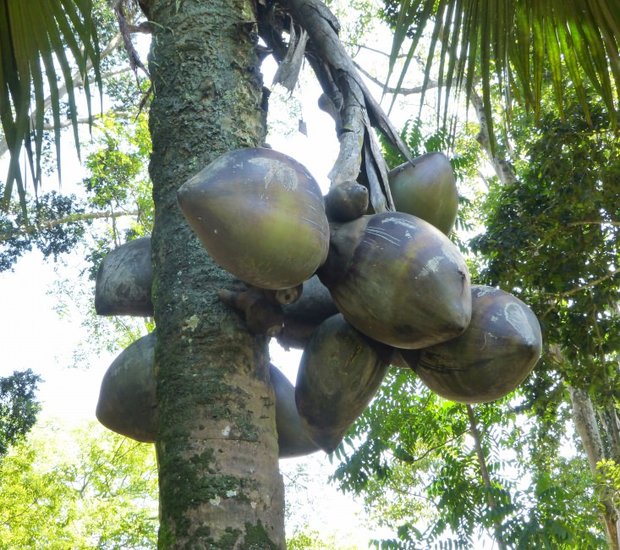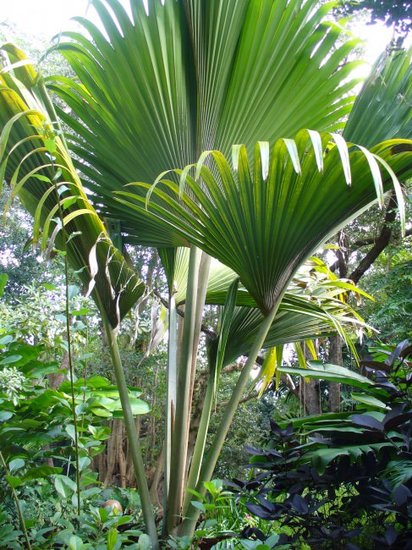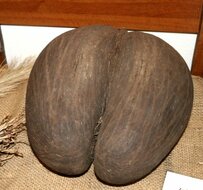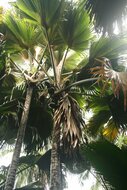Do you have a question about this product?
Ask us your question








Product description
The very rare sea coconut produces the heaviest fruits in the world (42 kg) and the heaviest seeds in the world (17.6 kg) and is at the same time one of the rarest seed types. The plant still grows on two islands of the Seychelles (Praslin and Curieuse) and is now well protected to safeguard the last populations. The tree can reach a height of 30 meters and takes 6 or 7 years to ripen the 40-50 cm large fruits. The seeds need about 2 years to germinate and can only float after the germination process, when they have become hollow. The species is threatened by wildfires and the illegal collection of the huge seeds. These are not collected for seed lovers, but for Asians who want to use them as an aphrodisiac. Since 1994, the Coco-de-mer Decree has been set up to combat illegal collection, allowing the natural population to recover somewhat. Due to the strict protection it is difficult to get the seeds nowadays, but once every few years some seeds are legally made available with the approval of the Decree. The costs for a seed have increased considerably as a result, but for a botanical garden or collector it is still possible to obtain the species in this way. By spreading a few seeds around the world every time, the species could also be made safer.Sowing Description: The seeds make a large taproot, which means that they have to be germinated in a large tub or actually directly in a large greenhouse. A hole can be dug for this, after which half of the seed can be put into the ground. The whole seed must be covered with a piece of glass or plastic, the air and soil must remain constantly moist. Germination should take about 2 years.
If someone has different experiences and tips for a good germination, they are of course very welcome!
Photo 1: Karelj via Wikipedia
Photo 2: Ji-Elle (CCA-3.0 Wikipedia)
Photo 3: Marion Schneider en Christoph Aistleitner
Photo 4: Scott Zona (CCA-2.0 Wikipedia)
Product specification
Family:
Arecaceae
Scientific name:
Lodoicea maldivica
Common name:
Coco de Mer
Native to:
Praslin and Curieuse
Sowing time:
All year round
Difficulty level:
Challenge
Minimum temperature:
15 degrees Celsius
Do you have a question about this product?
Ask us your question
Product specification
Family:
Arecaceae
Scientific name:
Lodoicea maldivica
Common name:
Coco de Mer
Native to:
Praslin and Curieuse
Sowing time:
All year round
Difficulty level:
Challenge
Minimum temperature:
15 degrees Celsius
Add review
Write a review about this product.
Reviews
No reviews yet


